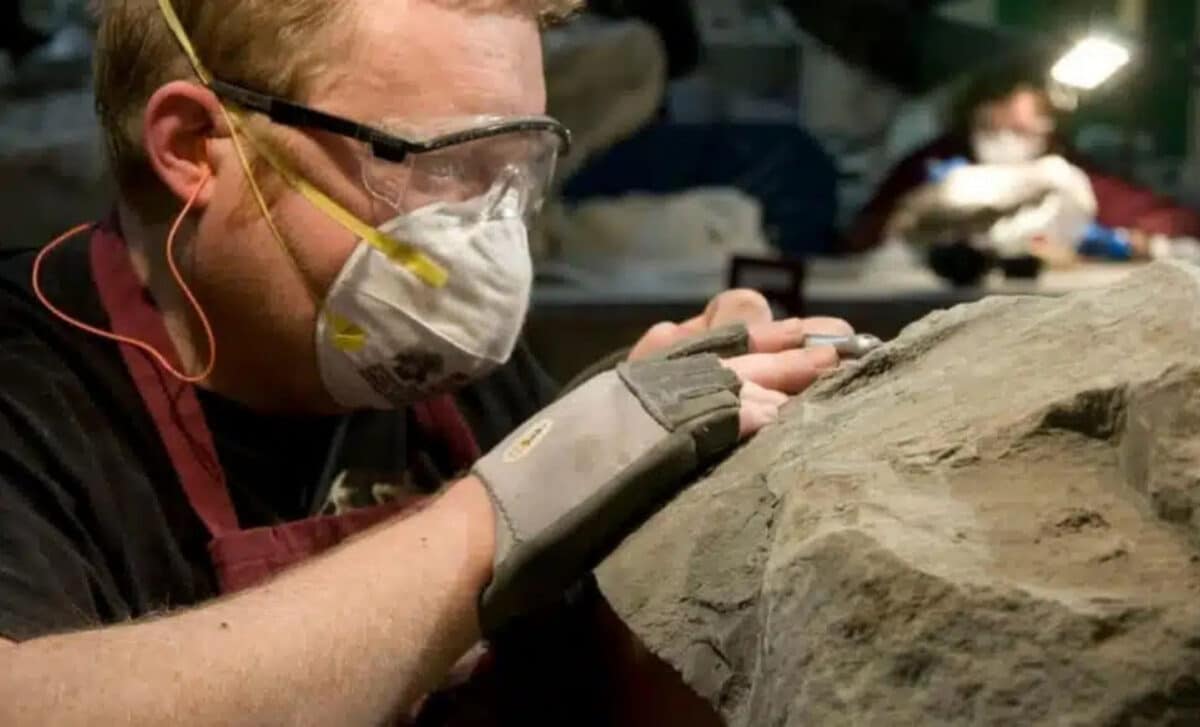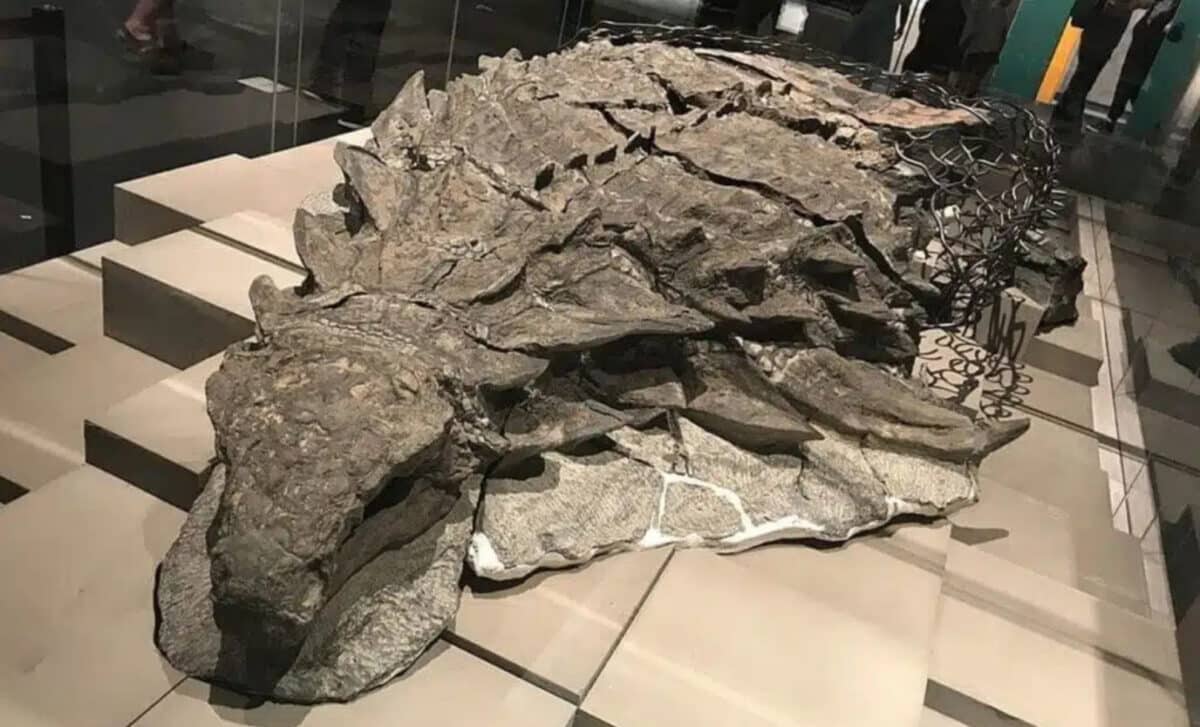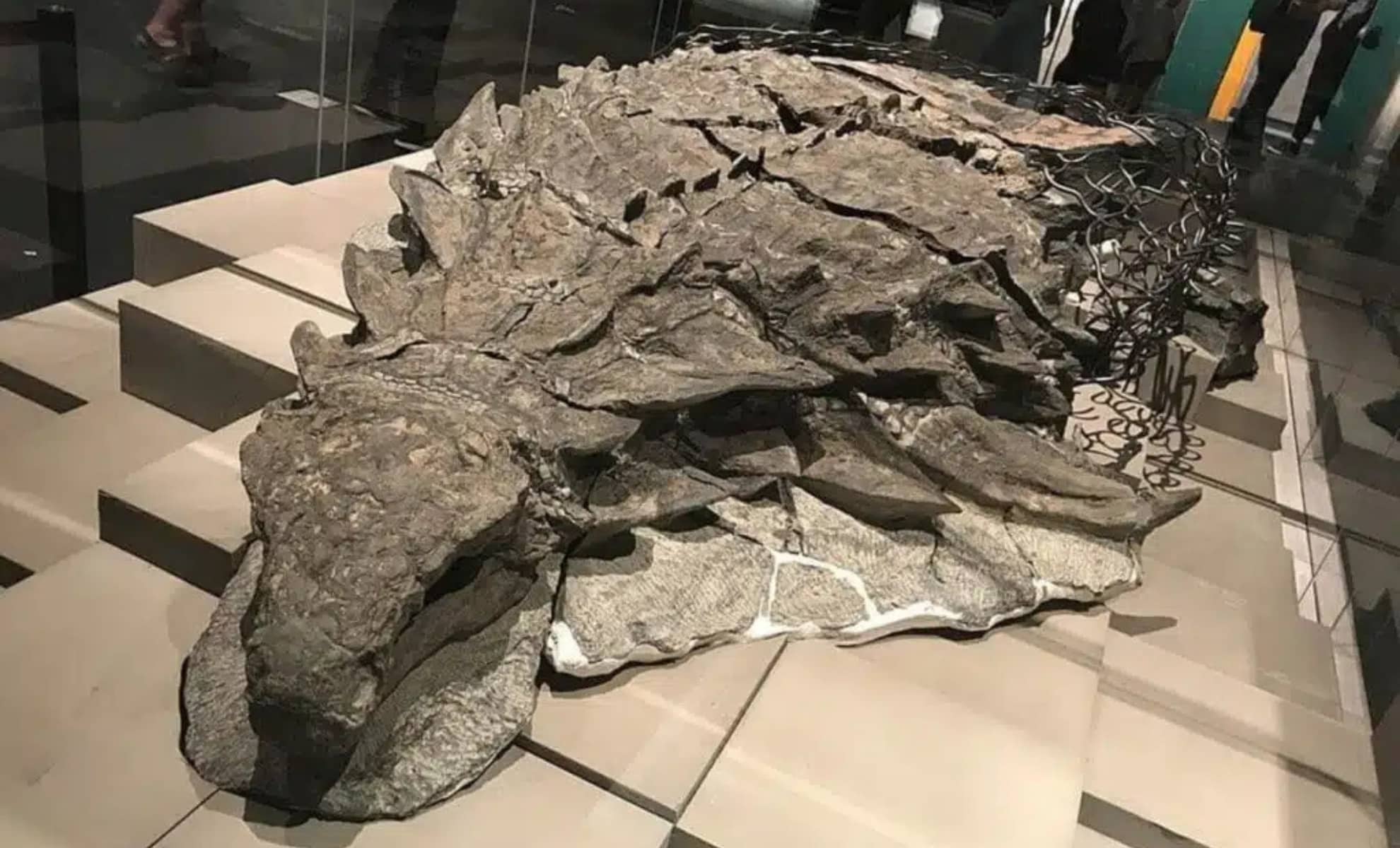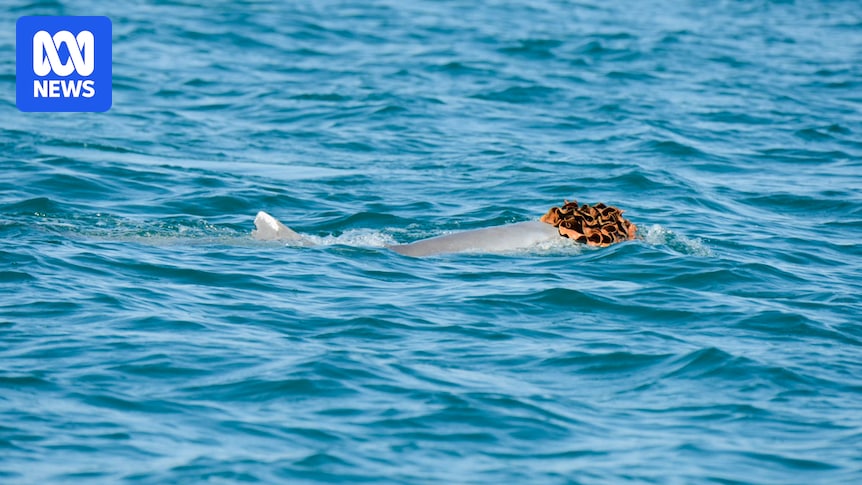In what paleontologists are calling a once-in-a-lifetime discovery, miners in Canada unearthed the fossilized remains of a dinosaur so well-preserved it’s been described as a “mummy.” Not only does the specimen retain fossilized skin and armor, but internal organs like intestines are still intact—offering an unmatched glimpse into a creature that roamed Earth over 110 million years ago.
The specimen, now housed at the Royal Tyrrell Museum in Alberta, belongs to the nodosaur family—heavy, armored herbivores that once plodded through the Cretaceous landscape. The fossil’s condition is so extraordinary that scientists were able to reconstruct its life-like appearance, complete with intact scales and soft tissue.
An Accidental Find Beneath the Surface
The discovery occurred by chance when workers were drilling at the Suncor Millennium Mine near Fort McMurray. Instead of coal or rock, they encountered the petrified body of a nodosaur, buried in marine sediments. According to Futura-Sciences, the preservation is so exceptional that it includes not just external skin patterns but also fully articulated bones and traces of internal anatomy.
Paleontologists estimate the dinosaur to have weighed about 1,400 kilograms in life. Even in fossilized form, the specimen tips the scales at approximately 1,100 kilograms—an indication of the density and integrity of its preservation.
Much of the body, from the shoulders to the snout, remains intact. Though the tail, back legs, and parts of one forelimb are missing, what remains is being hailed as “the best-preserved nodosaur ever discovered,” according to technician Mark Mitchell, who spent years carefully preparing the fossil for study.

Preserved by the Sea
Experts believe the nodosaur met its end near a body of water, eventually sinking to the seabed. There, oceanic minerals may have quickly coated the carcass, preserving its outer layers and internal structure before decomposition could take full effect. This theory is supported by the presence of marine deposits found within the skin and armor.
Don Henderson, a paleontologist at the Royal Tyrrell Museum, noted that the fossil still had soft tissues clinging to its bones—an almost unheard-of condition in dinosaur remains. The creature’s stomach area yielded a particularly rare feature: well-defined intestines, never before observed in this type of dinosaur. This allowed researchers to study the digestive anatomy of nodosaurs for the first time with such clarity.


A Fossil Like No Other
Identified as Borealopelta, the fossilized nodosaur belongs to a genus of armored dinosaurs known for their tank-like appearance and plant-based diets. With a total estimated length of 5.5 meters and a weight nearing 1.3 tons, this animal was a formidable presence in its prehistoric ecosystem.
Its skin, complete with distinctive scale patterns and armored plates, has allowed paleontologists to digitally reconstruct its physical appearance with unprecedented precision. These details offer new insight into how such dinosaurs might have moved, interacted with their environment, and defended themselves against predators. According to scientists at the Royal Tyrrell Museum, the nodosaur’s preservation is unmatched in North America and possibly the world.
Despite the loss of parts of its tail and legs, the fossil remains a breakthrough in dinosaur paleobiology. Its discovery—largely accidental—continues to capture global attention and raises new questions about fossilization processes and Cretaceous marine environments.
1
First Appeared on
Source link













